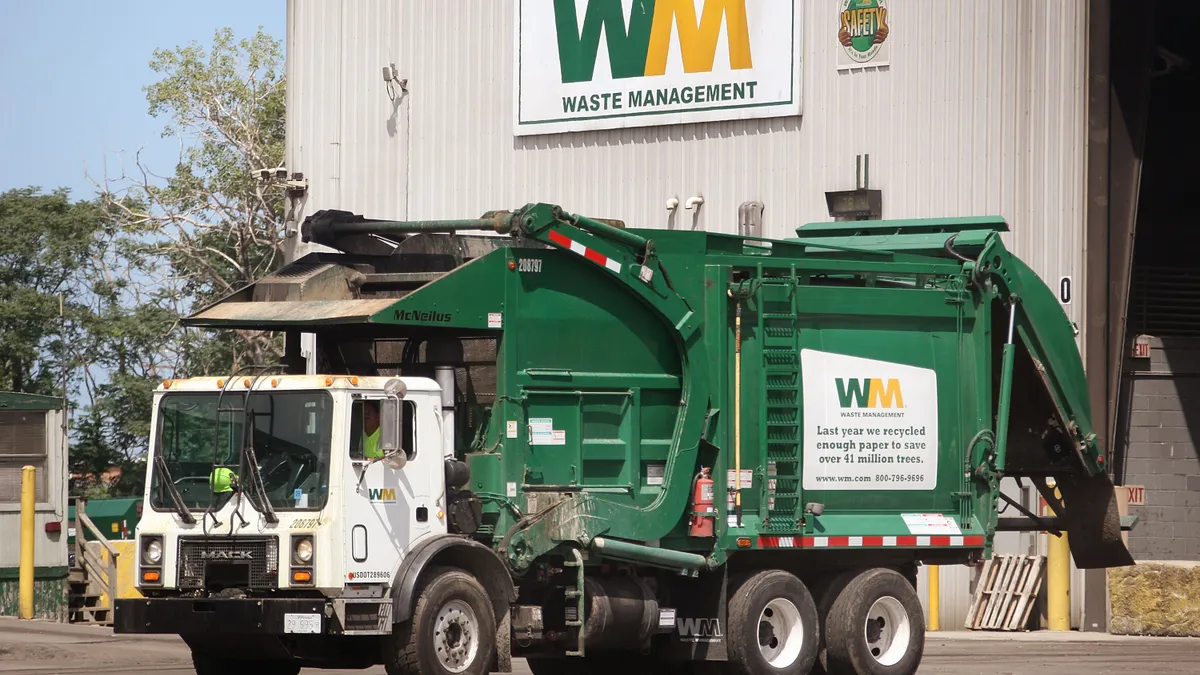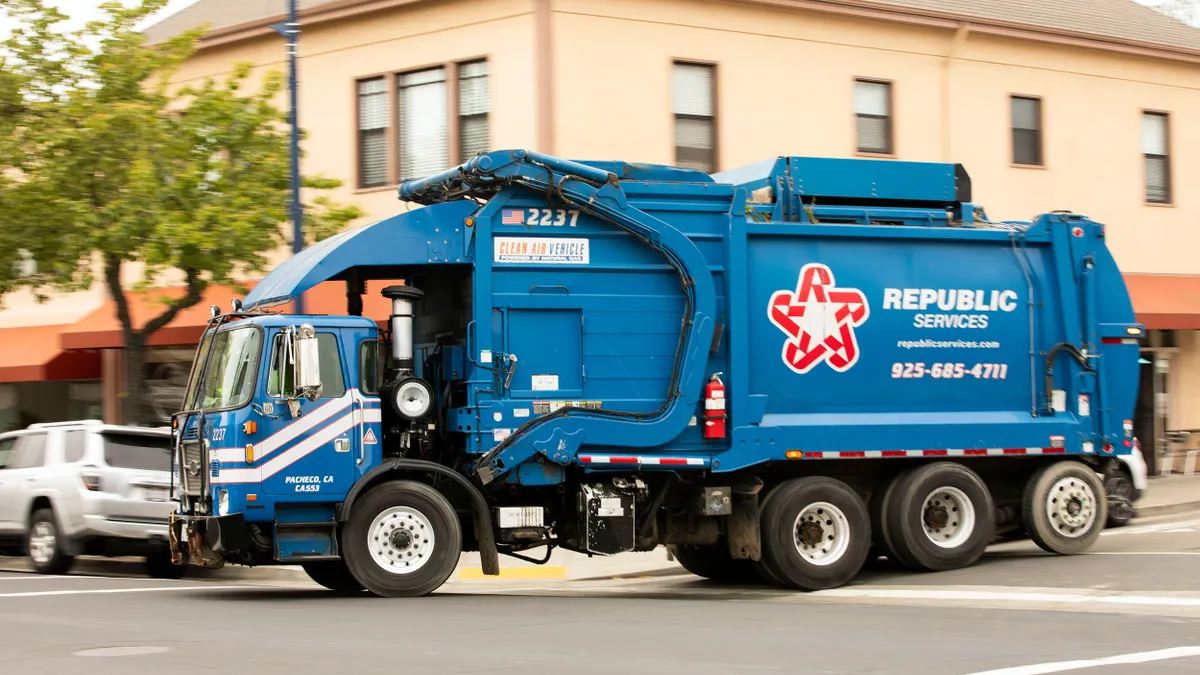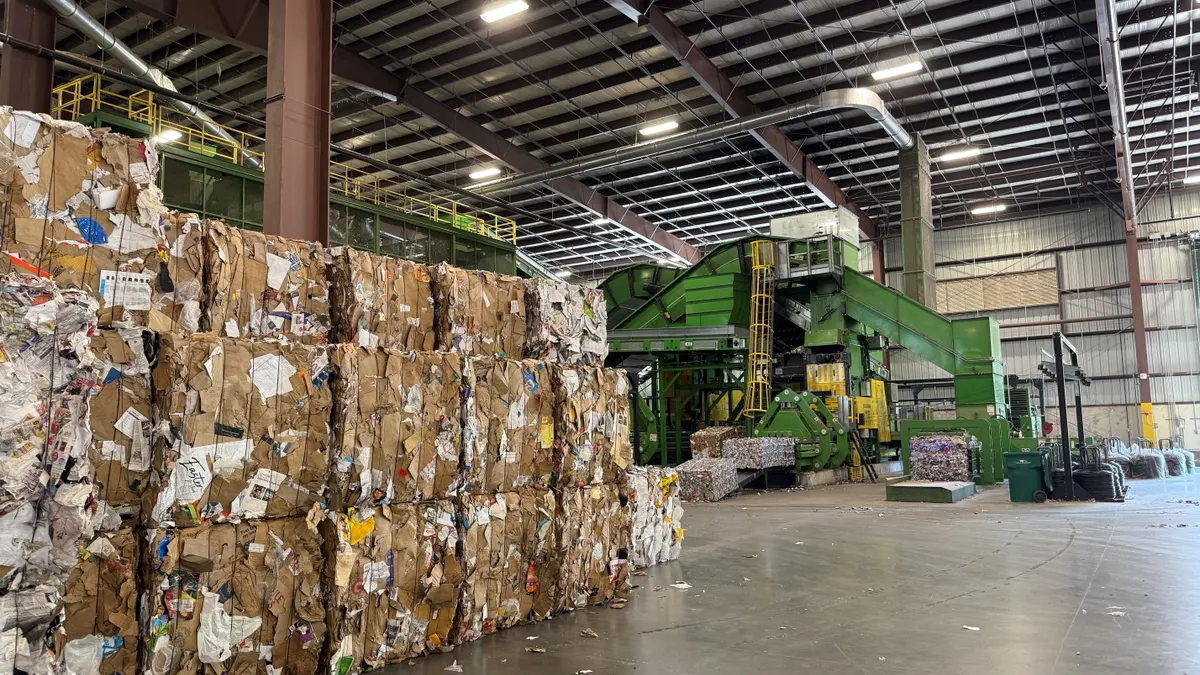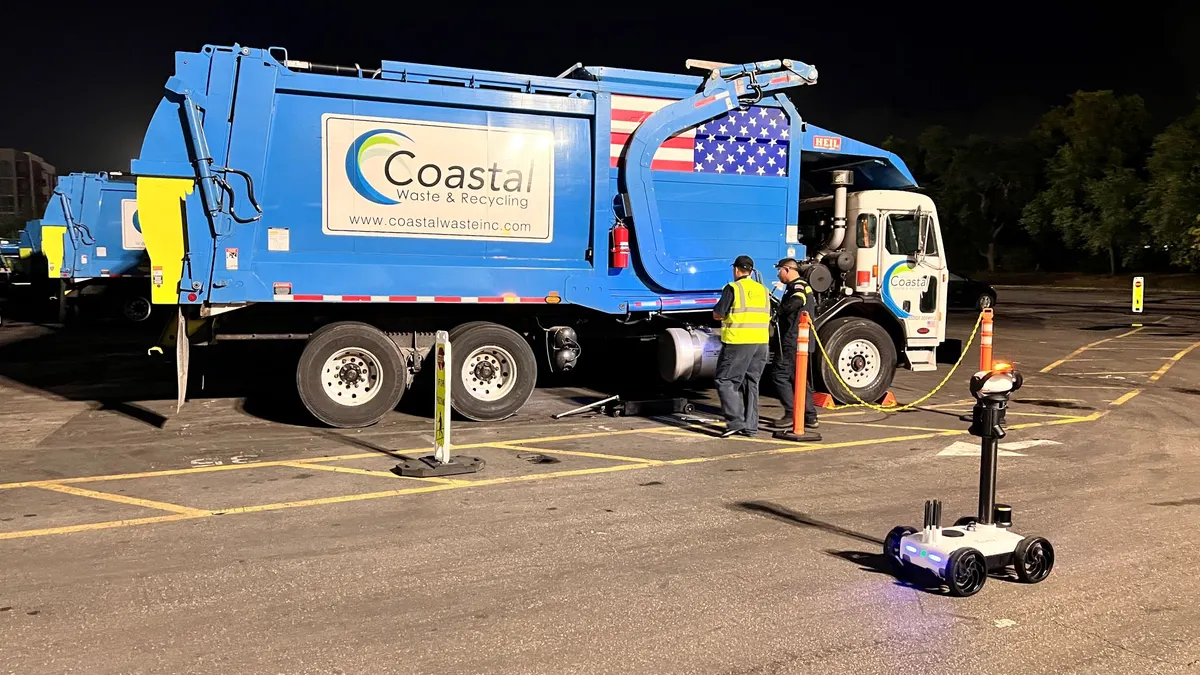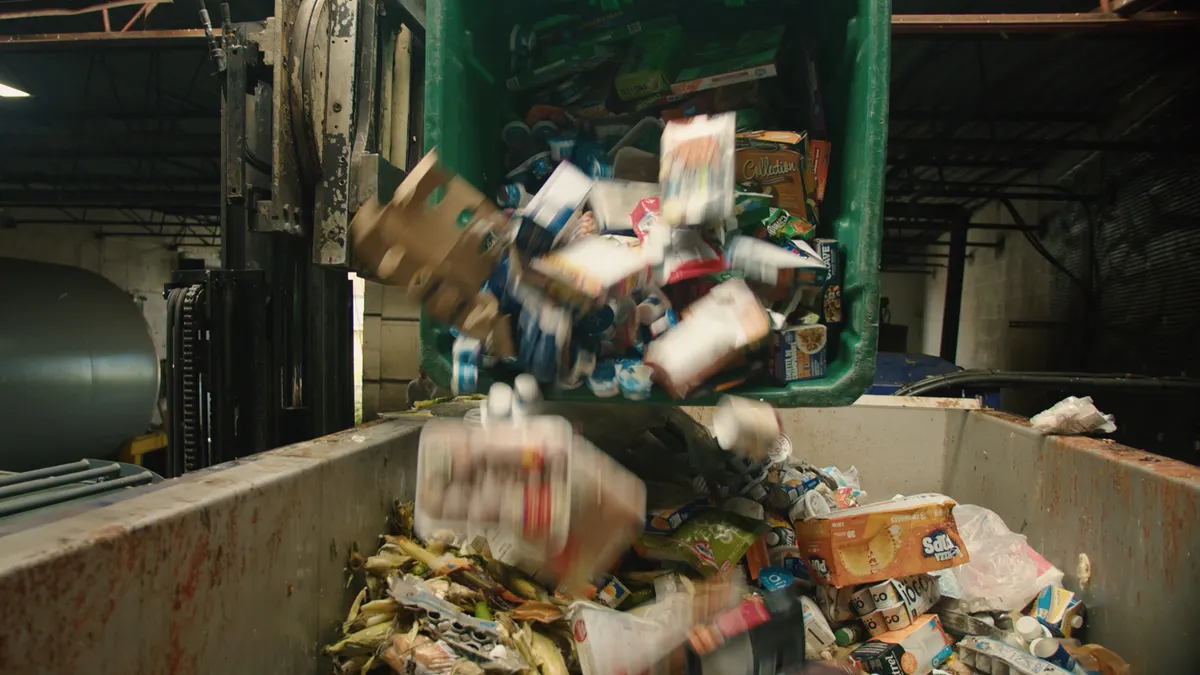A long-awaited city study sent a shockwave through New York's commercial waste world this week and took the ongoing reform debate into uncharted territory.
New York's Department of Sanitation (DSNY) and Business Integrity Commission (BIC) have called for establishing waste collection zones as opposed to the current open market system in their 2016 Private Carting Study. The city says this will reduce emissions, increase diversion rates and improve labor standards. Implementation is expected to take at least five years, require some form of legislation and draw on feedback from a range of sources.
Though the city’s zero waste goals extend to the commercial waste industry, this marks a new level of involvement from DSNY. Now that the platform of labor advocates has in effect become city policy, industry representatives have offered responses ranging from cautious to caustic.
"We support the approach and we’re pleased that we've been invited to participate," said David Biderman, CEO of the Solid Waste Association of North America. "As with many solid waste-related issues there are challenges and obstacles to overcome and I’m expecting there to be a vibrant dialogue around zone collection in New York City."
In an emailed statement the National Waste & Recycling Association (NWRA) expressed its commitment to working with city government, but also expressed serious doubts.
"Our experience nationwide shows that proposals such as these unfairly limit competition, and limited competition can lead to negative consequences," said Christopher Doherty, vice president and chief marketing officer for NWRA.
Others critiqued the plan for its potential to stifle the market’s evolution and called for a third-party data review.
"Going to this model in New York City would completely eliminate innovation," said Greg Lettieri, CEO of Recycle Track Systems. "I do not think this is the answer. I think this is a regression."
When asked for a response, DSNY’s public affairs office pointed to a previous statement by Commissioner Kathryn Garcia’s in the study’s press release: "The magnitude of the improvements in air quality and reduction in truck traffic coupled with the projected stable pricing for businesses the study found are compelling reasons for implementation of commercial waste collection zones ... We are excited to work with City Council and industry partners to develop a comprehensive plan to achieve these environmental benefits while also improving safety standards for workers and achieving our zero waste goals."
Amid these mixed reactions, labor and environmental advocates from the Transform Don’t Trash campaign were thrilled with the study’s results.
"The debate is over in terms of the validity of zoning and how it creates efficiencies both in terms of routing, in terms of improving air quality and in terms of improving worker standards," said Brigid Flaherty, organizing director for the Alliance for a Greater New York. "It’s a monumental victory."
Details on how the city will bring these groups together for the planning process are still being worked out. In the meantime, Waste Dive has highlighted some points in the study that may generate questions when the discussions begin.
The haulers
Based on the study's market analysis, conducted by BuroHappold Engineering with 2014 data, New York has 90 carting companies actively focused on picking up putrescible and recyclable waste. About 70% of these companies are based in the five boroughs, but half of the nearly $500 million market is controlled by non-local companies.
The five largest carters control 46% of the market and the 20 largest carters control 81% of it. New Jersey-based Action Environmental, owned by private equity firms and individual owner-investors, is the largest in terms of revenues. IESI New York, now a subsidiary of Waste Connections, is the second-largest. The next eight largest companies are family-owned.
According to financial information provided to BIC, the average large carter operates with a margin of about 6%, while many medium and small carters may operate at a loss. Because BIC doesn’t set a rate minimum, it’s common for carters of all sizes to underbid each other and this can squeeze out smaller companies. The potential for smaller zones for these companies has been discussed and could be part of the planning process.
As noted in the study, "If implemented, a zone-based system would need to ensure financial sustainability for private carters, and thus allowing them to reach a reasonable operating margin would be critical to the success of any related policy."
Financial reports filed with BIC in 2013 showed that 64% of companies' revenues came from putrescible waste, 19% came from construction and demolition waste and 4% came from paper and cardboard. While the city has since updated requirements for collecting recyclables, the pricing hasn’t gotten much more favorable.
The latest estimates put the commercial recycling rate around 20%. Though unlike DSNY which has a 20-year contract for processing its recyclables, haulers are more vulnerable to shifts in commodity prices. A number of haulers have made recycling a priority, but the realities of this are still challenging.
Garages and transfer stations
The routing analysis, conducted by Sam Schwartz Engineering, noted that in many cases these facilities are "far from the core service area of the route." In the current system the majority of city-based transfer stations are in three neighborhoods which has sparked debate over environmental justice concerns and led to an attempted halt on recent organics contracts.
It’s possible that a dormant City Council bill aimed at reducing the amount of transfer stations in these three neighborhoods could receive new attention as part of a zone collection system. DSNY’s long-delayed network of marine transfer stations might even play a role.
Waste brokers
Based on interviews conducted by BuroHappold, waste brokers aren't a popular option among many carters. Though especially in large buildings these brokers still play a central role in organizing numerous clients. The analysis noted that their influence is declining and placed their share of accounts at about 6%. But it is unclear if that will be enough for them to get a stake in the planning process.
The workers
Worker safety has been a primary part of the reform debate and a big focus nationally. Based on 2013 reports filed with BIC, the 90 carters covered in the market analysis employ more than 3,000 people. Other reports have said that number is higher.
In the 2013 data, drivers accounted for 36% of employment and helpers made up 10%. Yet the study notes that this equals four drivers for every helper, which isn’t realistic.
"This tends to support suggestions from a variety of sources that practices such as treating helpers as ‘casual’ employees (that is, day laborers), paying them off the books, or having them informally hired by individual drivers, are widespread," says the study.
If this is happening at some companies, it raises many questions about whether helpers are receiving proper wages and benefits.
Safety risks
While the potential dangers of waste collection are well-known, they can be hard to show. The safety analysis, also conducted by Sam Schwartz Engineering, noted that it was hard to draw solid conclusions based on limited data.
The study’s executive summary highlighted these challenges: "Relying solely on safety data to understand the breadth and depth of safety challenges may be misleading. The low frequency and high severity of incidents reported across safety datasets combined with information gathered during interviews indicates that less serious incidents may not be regularly reported to appropriate authorities."
The analysis said that larger companies were more likely to have regular training programs than smaller companies. The balance between safety and efficiency also came up as a key issue.
Interviews with workers yielded one troubling anecdote: "One driver spoke of a previous company where retaliation was an issue. Workers were deterred from reporting safety incidents by being given the most difficult routes if they did."
The customers
New York's commercial waste industry exists to serve the varying needs of more than 100,000 customers from corner bodegas to block-encompassing skyscrapers. While much of the work often happens overnight, some establishments may require multiple collections per day or pickups at a different time than a neighboring business.
The study says a zone collection system could reduce vehicle miles traveled by 49-68% and in turn reduce greenhouse gas emissions by 42-64%. Yet these numbers are based on hypothetical routes that may differ from the realities of nightly collections. The needs of different businesses on a block or in a neighborhood may be hard for a single hauler to meet in a geographically efficient way. This could also be a big point of discussion in the planning process.
As seen in the city’s recent Zero Waste Challenge, many local businesses are interested in increasing their diversion rates. Data analyzed from BIC’s Customer Register found that the average price for recyclables collection is only about 5% less than putrescible waste.
Larger customers were found to more frequently receive discounts for recycling and have their waste collected in separate trucks. Smaller customers often paid the same and saw all their material placed in the same truck. "Such flat-rate pricing across all waste streams reduces the incentive to recycle for these customers," says the report. Finding ways to make recycling cost-effective for both customers and haulers will be important.
Associated costs
The market analysis found that larger customers pay less than smaller customers on average — $9.60 per ton as compared to $13.20 per ton — and often have more leverage. They’re also more likely to have longer term contracts.
When interviewed about a potential zoning system, some customers expressed concerns about what it would mean to have fewer options and whether they could use the same hauler for locations in multiple neighborhoods. One cost impact scenario in the study also found that the costs of requirements around labor, diversion rates and equipment could potentially be passed on to customers.
Overall the study found that customers were positive about the potential environmental and labor benefits. Though it did include one interesting sidenote: "...representatives of larger customers, with a more sophisticated grasp of public policy, did raise queries as to whether environmental goals could be achieved through alternate policy choices, such as mandatory recycling and composting programs, or stricter fuel emissions standards for commercial carting trucks."
This argument is a favorite of many in the carting industry and is sure to come up again.
The next five years?
The preliminary timeline set by DSNY includes two years of planning, followed by legislation and an implementation period. In total this could take at least five years. When asked for specific next steps in the planning process, DSNY had no comment.
Long-term solid waste policy is understandably complicated and takes time. For example, New York is still working toward fully implementing its 2006 Solid Waste Management Plan. On an organizational level it’s unclear whether DSNY will assume responsibility for this zone collection system or BIC’s role and size will be expanded.
On the political front, some players could change next year as Mayor Bill de Blasio is up for reelection and a number of City Council members are term-limited. Some industry representatives have signaled intentions to push back on the plan and some have already begun. Large national companies may also begin looking into the possibility of bidding on a zone.
New York’s commercial waste world moves fast, but a change of this scale is going to take plenty of time.







